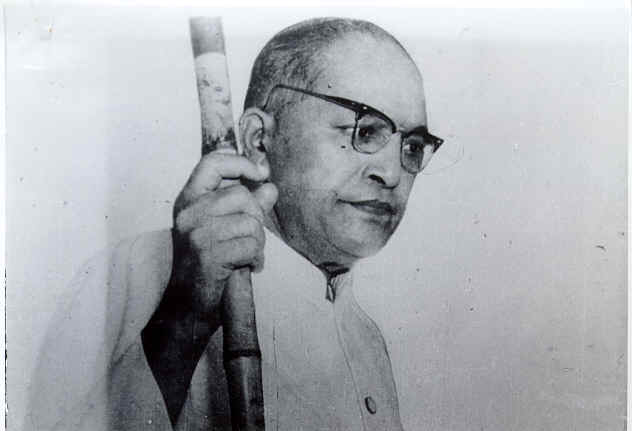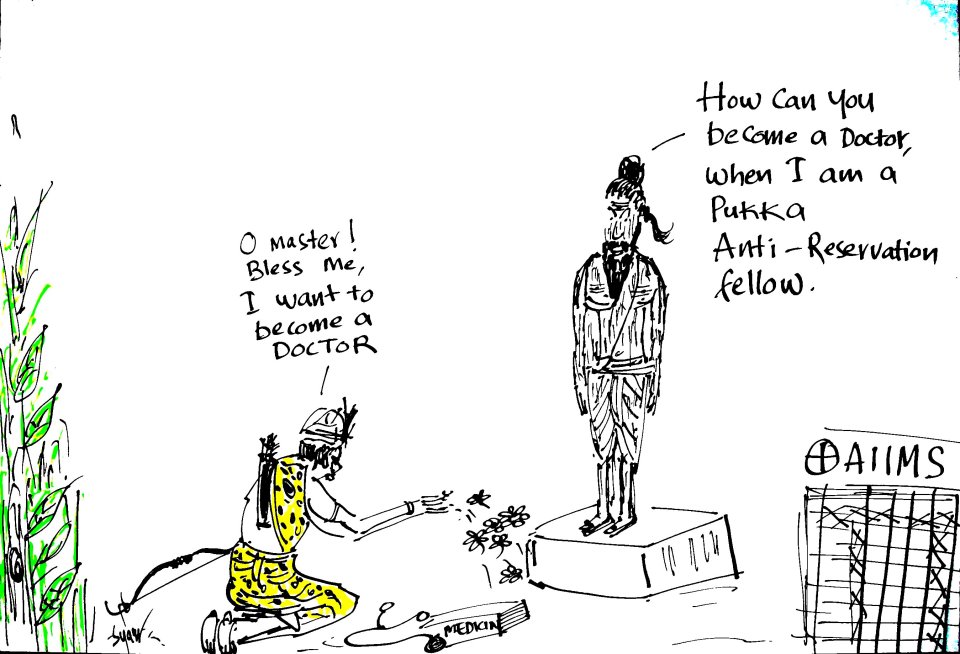B. Prabakaran
Every year Ambedkar is celebrated and remembered across the globe, at least twice a year, on his birth and death anniversary by the political parties, social movements, NGOs and committed individuals at different venues. Of late, the dates are being observed in various international forums too. For the very first time, in the history of United Nations he was remembered last year on the 125th year of his birthday, more to the point Ambedkar has become a symbol for other marginal groups as well.

There was a time if we look back when his writings were ignored; his photographs had been shunned in the government offices, seminars on his thoughts were deliberately precluded. No university had come forward to bring out his writings and speeches. Some of the academic institutions still maintain an intentional silence on Ambedkar and his ‘ism’. Even today only few research centers have a full set of his voluminous writings.
Soon after his centenary commemoration, dalits have, indeed, begun a new ‘Epoch of Ambedkar’ by discussing, debating, disseminating his writings and photographs at the regional level together with the translations in regional languages. Now we have his busts ubiquitously in every village and the urban areas. Invariably every political party wants to appropriate him representatively for vote bank politics by garlanding his statues and images. The government has given much attention to his busts, the dates and to every little occurrence that related to him, expectedly not for his ideas. One of these kinds of attention or appropriation is the recent pronouncement of Maharashtra government that marked the date on which Ambedkar had entered the school in Satara as ‘Students’ Day’. Ambedkar’s birth date now has become the ‘Water Day’ in India.
We could categorize the books that have come out to this point on Ambedkar into two subjects that pertain to the oppressed, in the public domain. One is caste and untouchability, second is Buddhism and conversion. The sophisticated public images of Ambedkar, like ‘Modern Manu’, ‘Dalit leader’, ‘Dalit Icon’ ‘lawmaker’, are heavily drawn by the so-called ‘Indian’ scholars, with the exception of few scholars. It imposes explicit values on the masses who believe it. The imposed caste image of him has also been reproduced by the media. In most cases, the media brings out the sensitive news of ‘desecration of Ambedkar’ statues to the public. Identifying Ambedkar with his caste is not fortuitous but a premeditated proposal whereas most of the Indian leaders have indubitably connected with their thoughts.
If we look at the literature, scores of studies have focused on the comfortable subjects of ‘caste, untouchability, Buddhism, conversion, Hinduism, constitution, not the other unexplored themes like democracy, state, education, feminism, labour, water, Muslims, agriculture, development, Human Rights etc. The forthcoming book by Vidiyal publication, one of the progressive publications in Tamilnadu, on Ambedkar is titled as “Ambedkar: Today and forever”. The substance of the book understandably based on the writings of Caste, Untouchability, and Brahmanism. How long should we publicize the ideas of Caste and other related subjects of Ambedkar? Why do they publish recurrently those subjects?
The Marathi writings of Ambedkar have to be translated into English and to other regional languages. We do not have any single book on first wife Ramabai or his second wife Savita, in Tamil. How were his collaborations with other leaders? What were his relationships with Rettamalai Srinivasan, who took part in the Round Table Conference with Ambedkar in London from Tamilnadu and his contemporaries, M.C.Rajah, Periyar E. V. Ramasamy, Shivaraj and Meenambal Shivaraj? Many other possible subjects remain unspoken.
Ambedkar had challenged caste as an exploitative system all through his life with high intellect. But he is characterized contemptuously by the caste Hindus as a caste leader. He still symbolizes an untouchable amongst ‘others’ though he was a voice of every oppressed of this country. On the other hand, dalits look up to him and identify proudly with him. Ambedkar, for them, is a symbol of achievement, inspiration, and dignity. The root of Ambedkarism is against all sorts of oppression, injustice, established notions, dominant discourses, and beliefs while it simultaneously promotes self-respect and dignity.
But do we understand him politically? What were his choices? What was his self determination? What did he insist and what did he disregard? What he strived for? What should we learn from his life? Social justice or the importance of religion or the commitment towards dignified life or the lifelong research or the intellectual ability or the strength or the love he showed towards society and people or the way he paved for liberation or his uncompromising stand against injustice and oppression? What have we learned from him in the last five decades as Indians, Dalits, women, labourers and students, when many of the marginalized still both in the villages and urban areas, experience untouchability and humiliated by the dominant castes every day? Whether his celebration would help us to understand his dream?
By a rough estimate, on April 14th and December 6th, two hundred to three hundred ‘poster organizations’ would gather every year at the memorial place of Ambedkar in Chennai, but not with the struggle for rights. A growing number of ‘Ambedkar processions’ on a pushcart with floral decoration could be seen in Tamil Nadu and other places. The places related to Ambedkar’s life happen to be pilgrimage centers for Dalits, who adore him. They become devotees merely for his material image and they talk time and again with the elation of his irresistible struggle. They adopted him personally not collectively. By doing so, they completely overlook the scholar and rebellious part of Ambedkar and this could jeopardize for his radicalism and ideals.
There may be many approaches like hinduisation, personification and casteisation of Ambedkar. In spite of everything, he is received as a modernist, philosopher, feminist and economist, etc. The only way to understand his dream, distinctiveness, and philosophy, is to have a discussion on his seminal works during every celebration and this should be an indispensable rule to become a member of any dalit movement in India. Ambedkar said once that his ‘Dhamma’ has hope for humankind, along with Dhamma we can get the fire from Ambedkar’s diligent struggle and it would give us purpose, reason and a specific path with hope.
~~~
B. Prabakaran, is the author of four books on Ambedkar and freelance researcher. He can be contacted at prabakar.bas@gmail.com









